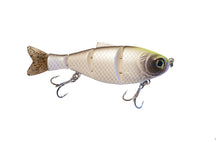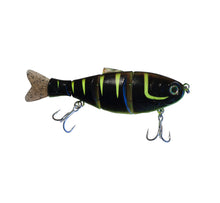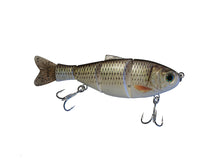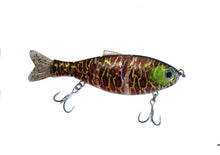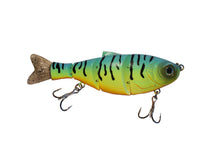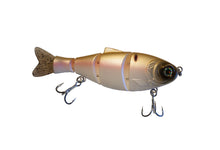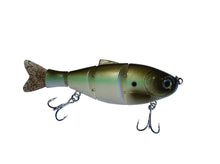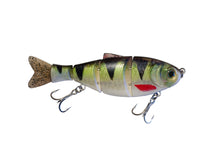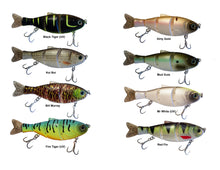
About us
Fish NSW is about being proud, loving and looking after our local fisheries. We love fishing and want to inspire, motivate and promote sustainable fishing practices so that the now and future generations can enjoy what we all love.
And who doesn’t want to check out the hottest fishing, locations and what’s on the bite so you we can all get behind our state and #fishnsw
We only use quality products and support local printing and embroidery businesses.
Technique Posts

Cod fishing tips for flooded Rivers
Cod season is just around the corner and with more rain falling in NSW this Spring than in my recorded memory, chances are your local river will be in flood for at least the start of the season.
The good news is these conditions are an extension of last season and Andy and I spent countless hours on the Murrumbidgee adapting our techniques to the conditions in the endless pursuit of Muzzy.
We are happy to share some tips and tricks we learned along the way for fishing flooded Rivers.
Tip one - Dirty tricks.
When the water is discolored and dirty and visibility low, its safe to deduct that your lure is harder to see than in clear water conditions.
Fortunately fish aren't people and they use more senses than sight to hone in on a meal. Namely the lateral line. A Cods lateral line is incredibly sensitive and tuned to pick up vibration in the water. This helps the fish track down the source of the vibration and find their pray, or our lures. Ever caught a cod at night? Chances are he felt that lure long before he saw it.
With this in mind we recommend using lures with lots of vibration and loud action in the water. Spinnerbaits / chatter baits, lipless crank baits, bibbed hardbody's and surface paddlers all put out a heap of action in Dirty water and are our goto choices.
Tip 2 - Where oh where are you hiding in all that water Coddy?
A popular target area in rivers in summer is the fast water / rapids at the head of the pools. One theory being the water rolling over the rocks creates aeration and higher oxygen levels making it more attractive for a cod to sit rather than the slack slower water in the middle of a pool. This is a location that holds active feeding fish.
We've noticed being at the head of the pool also gives a predator the first opportunity to attack anything being forced into their zone by the current.
In flooded conditions the first theory is unlikely to work as a Cod will have to spend an enormous amount of energy fighting the flooded current to stay in that area in the hope enough calories come by to make the effort worthwhile.
You'll also struggle to get enough action into a lure before it gets ripped past you by the current.
The rocks and usual indicators in the middle of the river an angler looks for to determine where to cast are likely to be under water in these conditions as well.
So where are the active feeders going to be? On the edges hard against structure where they don't have to waste energy but can still see something being washed down or trying to escape the current. These fish are picky at the best of times, when they are hungry they will eat whether its in normal flow or flooded.
Last season we had success targeting visible structure between the fast flowing water and the edge of the bank. Don't be afraid to target structure that is freshly flooded that would normally be out of the water like tree trunks and rocks. If you can find sheltered structure with deep slack water between it and the fast flowing current, your right in the zone.
Tip 3 - Try somewhere new.
It might sound a bit airy fairy but there really is an advantage to fishing new water in terms of mental process and thinking outside the cube.
Always hitting old faithful means you have already formed an opinion as to where is and isn't a good spot. Based on previous captures, opportunities and experiences.
When the river is half, one or two meters higher than normal all those spots you had figured out previously are completely different anyway. Trying to blind cast at a rock you know is there but is now completely submerged by fast flowing water is likely to end in a snag and a donut.
Going somewhere new forces you to think differently and make objective choices in the moment on where to target and why. These are the moments that elevate our thinking as anglers from 'this is a good spot because we've caught fish here before. To' this situation has every feature required to support a feeding fish'. Fresh thinking for fresh results.
Tip 4 - Use the tech to tell the conditions.
In NSW we are very lucky to have access to up to date river conditions, heights and also historically data for most cod waters in NSW.
These charts indicate the river height at a particular fixed point in the river called a station. Get familiar with the stations that are above and below where you are fishing and you'll be on your way to understanding what the river height and conditions will be like before you invest your time, effort and leave passes into physically going out and looking.
This link takes you to the BOM -Bureau of Meterology - website and the river height
http://www.bom.gov.au/nsw/flood/rain_river.shtml
Tip 5 - Fish upstream of in-flowing water ways.
Adapting to flooded conditions keeps us in the hunt for a cod in swollen rivers.
It is still an advantage to know where the water levels will be at there lowest and in turn the first areas to recede after a flood event and present anglers with more favorable fishing conditions.
The areas first to recover will be upstream of tributaries like creeks or Dams that flow into the main waterway you are intending to fish.
If you have, for example, a creek flowing into the main river, down stream of this junction between creek and River will naturally have more water pushing through the main river than upstream of this junction.
Using Google maps to see what creeks, rivers and dams are flowing into the main river and where the junctions are will give you an insight into where to access the river upstream of these tributaries.
Tip 6 - We don't need another hero.
Rivers are dangerous places in the calmest of conditions. In flood waters though that danger increases out of site.
Flooded water is powerful, cold and capable of sweeping away a person in a moment.
Please be careful, plan not to cross and do not risk your life for the sake of a snagged lure.
If the river is in flood do not enter the water, stick to the bank and live to tell tale.
That is a wrap for this one. We hope this article has given you something to think about in the lead up to Cod opening 21/22.
If you enjoyed this one or have a tip of your own to add let us know by liking and commenting on our post on Instagram.
Be sure to tag us in your photos if you catch a fish using these tips.
If you're in the market for quality fishing apparel/ brag mats or lure scent have a look at our store while your here. Your patronage really helps us to keep bringing you quality content.
Happy Fishing!
Ian and Andy Fishnsw.
Jigging for Squid
How to Target Squid by @Bennysfishing
Benny is an all-round angler from Sydney. Salt, fresh, ocean, estuary or rivers you name it Benny is keen on it. He also contributes to the Australian Fishing Network and loves to give back to the fishing community and is always willing to answer any questions or chat about fishing.
All about the jigs
Benny’s absolute go-to is the Yamashita jigs. Size does matter depending on depth. In Sydney harbour and water around 7-15m he uses anything from 1.8 up to a 2.5. Anything deeper start with 3’s and 3.5 size jigs. Benny’s never fail lure is the Yamashita Naturals in 2.5. It’s always the first one he ties on to throw around and has not let him down yet!
But there are so many colors to choose from.
If in doubt go natural colours! This rings true in most lure choices, try and aim to match the bait like pilchard or whiting colours. Benny sometimes also leaves a bright one out beside the boat bobbing around near the bottom and this will sometimes get hit depending on the water clarity and how they’re feeding. If a bit timid he finds that natural colours slay and if they’re really aggressive easy to go the pinks and oranges. Have a few out at once is a good litmus test for what’s happening. Go natural, dark and bright and one will start to be a standout then all change to that.
How do I actually use these jigs?
Cast long! Once it hits the water start to count as it sinks down. Use the sounder to know the depth and try keep the jig just above the kelp or weed. Once they see it, they’ll shoot out to your lure. Benny uses a slow wind back with a few subtle hops. Benny says ‘You don’t need to go crazy whipping it hard. A simple two or so hops and then a pause will be enough to entice a hit’. A hot tip is always having a rod ready for a follower. You’ll see this a lot and when one is hooked a few are likely to follow, being able to quickly throw out a 2nd jig will always gets hit by the followers!
When should I go and what to look for?
Aim for the top of hightide or the bottom of the low tide. This ensures that there isn’t a huge amount of swell/current that makes it hard to work a jig. Also, the squid don’t need to work as hard to chase a jig. Benny’s favorite structure is kelp beds on rocks with sandy patches. If you find these at the right depth you might pull your PB. Some of Benny’s biggest calamari with hoods 40cm plus was in 2-3m of water!
A good rule of thumb is spring/summer depth is 2-8 meter and winter aim for deeper 20+m. Wind isn’t as much a deterrent as a fast current and usually won’t stop the them hitting jigs. If its rained push out a bit deeper, they dislike freshwater and disturbed water conditions.
Understanding squid
Arrow squid love being mobile and moving around and Calamari are super structure orientated like Cuttlefish. Being both an incredible predator and also number one on the delicacy list for large predators means they need structure to duck, weave and hide in. So, focusing on kelp beds with sandy bottoms, jetties and moorings are likely to hold these guys.
The full setup
Benny uses a storm adventure 6’6 rod 4-10lb. 2500 reel and suffix 10lb with a 1.5 to 2 meter 10lb fluoro leader. The longer rod is good at cushioning the pulses especially when you get a big one. Without the extra cushioning it’s easy to pull the hooks. Don’t forget to grab a mustad fastach clip too, super handy for swapping the jigs around.
Why squid?
Why not? They are lots of fun to catch for kids or adults and any squid are great live bait for chasing bigger kingfish or mulloway plus they’re also bloody good to eat!
The take away.
Always start out deeper when approaching a spot and work in, ensure you cover new ground thoroughly by fan casting an area. Take your time and always match your jig size versus the depth, there is no harm in going small jigs. But the most important is just fish slow! If in doubt, slow it down.
Huge thanks to Benny @Bennysfishing for giving us the hot tips he would also like to thank Hummingbird for the ever reliabile sounder that gets him on the structure, Rapala and Twice Eyewear for all the support.

Crank baiting for Googong’s Monster Goldens by @cbrnativesquad_
Brad Meredith and Dylan Robb - @cbrnativesquand_ are two passionate Canberra based anglers who focus their freshwater fishing energy on targeting big Golden Perch in nearby Googong dam NSW. In this feature the boy’s take us through the gear and tactics they use to raise these impressive native fish. Although their efforts are focussed on Googong they are confident these techniques will transfer to other stocked impoundments in Nsw. The Boys both actively practise catch and release on natives.
About The Dam.
Googong dam - Is a dammed section of the Queanbeyan river located in capital country NSW, it is classified as an alpine waterway. The dam is a short distance from the Googong township – Queanbeyan and Canberra.
Its primary function is a water supply reservoir for these cities. It is a day use fishery, managed by NSW national parks. the Dam is stocked with Murray Cod – Golden Perch and Silver Perch. Rainbow trout, Brown Trout and redfin are also present.
Land based fishing is permitted from the western foreshore while the eastern foreshore is dense bushland and national park, it closed to public access.
Boat, kayak and canoe water craft are permitted on the dam. Boats require a permit and must use electric outboard motors and electric trolling motors only – petrol outboards are not permitted on Googong dam. It is also closed on total fire ban days.
For the skinny on obtaing a boat use permit – All the rules and open and closing times use the links at the bottom of this article.
The go to yellowbelly Lure.
Brads favourite lure for targetting big goldens is the jackall tn60 - he says any lipless crankbait is worth a throw, the Jackalls however are a standout for the boys. “They’re versatile and can be fished at all depths”. The tn 60’s have ball bearings inside that make a very loud rattle, this stimulates the fish’s lateral line, which will entice fish from a fair distance and bring them to you.
With so much water to choose from where do you focus?
Dylan and Brad like to fish the banks around 4m to 6 metres in depth. They look for rocky points and horizontal timber. Cast straight at the timber or rock faces, work the lure back out to the boat and you’re right in the game.
The Importance of lure colour.
The boys say lure colour selection is a big thing for triggering the bite. The lure colour they recommend you use depends on the water clarity on each day. In clear water they like to go for a natural colour such as green or a redfin imitation. You dont need a lot of flash or bright colours on these days, because the fish will be able to see the lure in clear water from a reasonable distance. In dirty water Brad prefers a bright coloured lure that will stand out loud and proud and get some attention.
Lure retrieve - varity gets the bites!
Both Brad and Dylan say the number one thing when retrieving your lipless crank is to never be predictable! They always like to change up the retrieve each and every cast. One cast maybe a slow roll along the bottom, the next hop it up then sink it naturally back down to the bottom, then the next maybe just winding slowly and twitching it along the bottom. Keep mixing it up until you get that hit!
All the gear.
Both Dylan and Brad use 2500 size reels with 10lb braid and 10lb leader - on 2-4kg rods at 7ft Long. The 7ft rod is importan and gives that extra bit of casting distance.
Mistakes and Lessons.
The most common mistake the boys notice others making when targeting impoundment Golden’s, is to sit in one spot and just drop the lure straight down and work the same water over and over. “We love to cover as much water as possible to find the trophy fish”. Move around and thoroughly work rocky and timber lined areas with a variety of lure retrieves and your results will improve.
PB’s and Goals.
Brad’s PB Googong Yellow Belly is a whooping 70cm, taken on a tn60. Dylan’s chasing him with a very very respectable 64cm also on old favourite Jackal tn60.
The current goal for both boys is to boat a Golden Perch over 75cm!
Big thanks to Brad and Dylan for this one. If you aren’t following them on Instagram already head over to @cbrnativesquand and check out their wall, plenty of river fish and Goodoo on their also.
@jackalaustralia TN60’s are available at all good tackle stores.
For Googong dam access - rules information and boat permit information use these links or your favourite search engine.
https://www.iconwater.com.au/community-and-education/recreation-at-googong-dam-and-foreshores.aspx
Tight lines and happy crankbaiting fron the Fish NSW team!

Live Baiting Estuary Mulloway
How To live bait for Estuary Mulloway by Jamie Culver @portstephensfishing
Jamie is an accomplished angler who spends most of his fishing credits targeting big estuary Jew fish in and around Port Stephens. Humble in his opinion of his mulloway fishing skill Jamie is keeping an open mind while tracking down these estuary gohsts. "There are definitely mulloway 'experts' out there however I certainly wouldn’t claim to be one. I will always be a student of this species until the day I throw my last bait in the water".
How did you get Started Targeting Jewfish in the estuaries?
“ My Good friend Riagan (@__Regz__ ) took me out for my first trip for a serious Mulloway and in a confident move guaranteed me a fish over a meter. Well he was wrong, we caught 3! It was this trip where I got the ‘bug’. I took everything back he taught me and applied it in the estuary of Port Stephens and started catching fish ”.
Bait and where to find it.
Jamie says many people use dead baits effectively for Mulloway however for him live bait is a must. The vast majority of Jew fish caught in Port Stephens are taken on live Yellowtail (Yakkas). These fish are usually the easiest to find in numbers and are a hardy species to keep alive. The bait collection is usually done out of the estuary around headlands where bait is known to congregate in big schools. On days were its too rough to duck outside various wharfs and moorings is the fall back option with burley used to bring them in.
Bait presentation hooks line and rigs.
When fishing on anchor in current or tidal flow hook live baits through the nose. This allows for the bait to continue to swim head on into the current and stay alive. Areas where flow is reduced or when fishing the slack tide I place the hook in the shoulder or the middle of the back. “ I Only run one hook with fish baits, personal preference but it has worked well for me so far. If using squid I will use a sliding Snell rig. I mainly run 30-50lb mainline with 60lb leader and like using a lighter gauge hook 7-10/0 for two reasons. Firstly to pierce the lip of the fish easily and secondly so the weight of the hook does not impede the live baits ability to swim around freely.
Tide and Times
Jamie has caught fish in the estuary on almost all tides and moon cycles however finds there are certainly times you can focus on to improve your chance of hooking up. A dark night with little to no moon is a good time to be fishing around artificial lights such as marina’s and breakwalls. The light cast from these places on darker nights can make for a more defined shadow line for Mulloway to hunt their prey. The slack or change of tide is definitely a place to start off and about an hour either side of it accounts for many fish. Two places I catch Mulloway however only produce fish in the middle of the tide so don’t be afraid to mix it up.
Daylight vs darkness.
The clear advantage for Jamie, of fishing at night is reduced traffic on the waterway. Other than that the day can be just as, if not a more productive time to catch Mulloway in certain areas. He has had sessions where multiple fish over the magic meter mark have been caught in the middle of hot sunny days in less than 4 meters of water whilst jet skis are racing around 50m from his boat. “Mulloway certainly like deep water and dark quiet nights however I have learnt they can be caught in the complete opposite scenario”. The advice is to keep an open mind and try different light parents.
Understanding Jew fish movements for successful live baiting.
Finding where bait is holding up is really important in locating Jewfish . In his experience that has been, silver biddies or herring congregating around structure. Mullet holding up in eddies, white bait in and around breakwalls. Places where tailor are seen chopping the water on dusk is often a clue that there is a food chain present sometimes leading all the way up to Mulloway.
Patterns for success and dealing with doughnuts.
When it rains it pours is an old saying that can relate to Mulloway fishing. Once you start to figure them out many fish start to follow. Sometimes just enough for them to fool you into thinking your all over them and you have cracked the code. Then you might hit a dry spell and I have certainly had a few. I have had periods where it’s been multiple fish trip after trip only to be doughnuts for the next several leaving you to scratch your head. I found the best thing to start doing when this happens is to start mixing up the tides you’re fishing until you find them again.
Common mistakes anglers make when targeting Jew Fish and lessons.
Overthinking it is a big part of fishing for Mulloway and I know I certainly used to do it. you can make it as complicated as you like however this often leads to people talking themselves out of fishing for them all together. Fish live baits in places where you know fish are caught to start off then expand from there. Get good live bait, fish were you know fish frequent and be confident.
After learning more about these fish over the past 2 years and being humbled by them time and time again If I could go back now I would not allow myself to ever think I was getting the hang of 'figuring them out'.
Do the research
Magazines - YouTube videos - online articles are a great resource in modern angling. The standouts for Jamie are Chris Cleavers (@getfished ) Tackleworld talk - available on YouTube - which focuses on of the technical methods of lure fishing for mulloway. It provides an essential foundation of knowledge to start looking for these fish in the estuaries that applies to all anglers seeking Mulloway using any method. Paul Lennon’s (@fish_port_stephens) mulloway article ‘Successful Jewie fishing’ in @fishingworld online magazine was of particular interest to Jamie, as Paul - a successful fishing guide and Jamie are both Port Stephens locals and regularly fish the same waters. These two sources alone cover the fundamentals of getting started estuary Jew fishing.
PB Mulloway
To date the biggest estuary Mulloway Jamie has caught is 132cm and 21kg taken in October 2017 in Port Stephens. The fish was gut hooked and didn’t release. Its frame was donated to the department of primary industries (DPI) where the ear bone known as the Jewel (otilith) was aged by the research team at 18yrs.
Current Jewfish Goal
“For me a fish over 30kg is the pinnacle of Mulloway fishing, although the good friend I mentioned won’t stop until he finds a 100lb NSW Mulloway. He assures me they are out there”.
Huge thanks to Jamie Culver @portstephensfishing for contriting in such depth in this feature. For anyone interested in learning more about targeting Jewfish in the Estuaries check out his and the other accounts on instagram metioned here and give them a follow – Most importantly get out there and have a crack! If you catch a Mulloway using something you learned here let us know about via DM on instagram. Cheers Fishnsw.
@portstephensfishing
@__Regz__
@getfished
@fish_port_stephens
@fishingworld

Skinny water Bass
Targeting skinny water Bass by Jai Millar
Jai is a keen catch and release fisho who targets a wide variety of species with great success but put him near any water that contains bass and he will find them. His personal best skinny water bass went 55cms and was wrangled on just 4lb leader.
Why bass?
Jai started chasing bass 3 years ago when his cousin and himself went on a small mission with cheap ($5 lures) attached. Heading to a local spot and not expecting to catch anything found themselves landing some very nice fish. Ever since that day he has been hooked on them since.
Gear choices for targeting Bass in rivers
His goto lure is 3" paddleshad from (Rick's fish on plastics) on top of its great action these plastics are easy to skip cast into the cover of snags as such have produced a lot of good fish.
When Chasing Bass a Stradic ci4 1000 paired with aShimano jewel 701 1 to 4kg with 6lb power pro braid running 6lb fc rock leader gets the job done. Jai says ‘It's great quality and never lets me down’
What influences lure colour choice
Picking a colour really depends on the conditions what is the weather and water like? If it's a sunny day Jai likesto use the more natural colours. When its overcast aim to throw around a few brighter colours to draw their attention.
Structure, techniques and weather
Understanding bass habitat is really important to find the fish. Always look for fallen timber, trees over hanging the water and shade. Once Jai has a spot to try he skip casts as hard as possible into the structure and does a slow wind back.
Jai has most success on really hot days as it seems to be the best river conditions. Just aim for shade and the snags and you can’t go wrong.
The biggest mistake people make when targeting bass in rivers.
No covering enough water. Don’t sit in the one spot too long just keep moving, casting and finding new spots.
Current bass goal.
Jai obviously is chasing that elusive new personal best. Hooking a 50+ bass is one thing but not being smoked by a wild river brawler now that’s what we call fishing!
Huge thanks to Jai for sharing his insights on chasing river bass.
Cheers from us at Fish NSW.

Salt water Fly Fishing for new players
Getting started on salt water fly fishing. By @jofm_78
Joe is a passionate angler form the south coast of NSW. His journey into salt water fly fishing began only a few years ago, but the challenge and reward of this art has made it his go to style of fishing.
How the Salt water fly fishing journey started for Joe.
I had a boat for many years and used a mixture of live bait and soft plastics. In 2008 I had my first lesson in fly fishing and I became really interested in the sport. After that I really wanted to focus on fly fishing so I sold my boat and bought a Hobie. From freshwater fly fishing it's been a natural progression to salt water fly fishing as I live on the NSW south coast and have a young son now so I can't get out to the rivers as much. I've been fishing saltwater in combination with freshwater for the last two and a half years.
Casting practice and technique
Get out and wave the wand around! Practice in a field or paddock, if you aren't able to get to a wide open space use a practice casting rod in the backyard to get a feel initially of the casting action and the rod. On the water Joe likes mainly a slow strip and recommends mixing up speed and pauses of retrieve between casts.
Favorite target. Where and when.
Joe focused on salmon, flathead and bream. His favorite sports fish in the estuaries would have to be salmon. "I tend to favor the channel drop offs and weed edges for salt water and find the turn of the tide is a good time to get on the water".
Goto Fly and the importance of colour
The goto is the Classic Clouser Minnow because you can chase a variety fish with it, it's super versatile. Fly colour in salt water is not as important as in freshwater but you do need to focus on presentation and profile of the fly. Colour choice is influenced by clarity of the water. I tie 99% of my own flies but the ones I do buy are only from Flyworx (Instagram @flyworx_au_) he does fantastic custom orders.
All the gear for beginners, reels rods line.
Joe likes a 6/7wt with matching intermediate line he recommends you invest in a decent reel to hold up to the salt water. TFO or Reddington fly rods are a good starting point for new players. 6lb, 10lb, 16lb leader straight to fly line (nothing fancy!). Using uni knots and clinch knots.
Mistakes and lessons
The biggest mistake Joe made when he started was trying to use over the top flashy flies when simple and minimal is key.
Pb’s and goals.
Joe’s PB is Australian Salmon at 69cm but he’s not after any records. He is planning to chase kingfish in the very near future.
If you where staring out again what would do differently?
Get started straight up with a local club for support and go on their outings to gain knowledge from other fly anglers. You Tube is also a great source of information. Also Not to get fancy with gear to start off with, just look for quality especially in your reel and line to hold up against the salt
Big thanks to joe for sharing what he’s learning. If you are interested in getting into saltwater fly fishing contact your local club or ask about them at your local tackle shop.
Joe would like to thank,
@flyworx_au_ and the Illawarra Fly Fishers Club

Trophy Flathead On Samaki Vibes
How to target Trophy flathead on Samaki Soft vibes by @danguilfoyle.
A Trophy Flathead is defined as a Dusky Flathead 70cm or longer.
About Dan & how his fishing journey started.
Dan is based on the NSW central coast and is a mad keen flathead Angler. He participates in the DPI trophy flathead tagging program at Lake Macquarie and has caught, tagged and released over 70 Trophy fish in under 2 years.
"My Dad got me into fishing, I have memories on the bank learning to walk with Mum while my Dad was fishing next to us. I first started to really love fishing at the age of 10 when I was first allowed to start riding my bike to the lake to fish with my mates after school".
Why samaki soft vibes to target trophy Flathead?
When soft vibes started to boom in the fishing scene, Dan started to use them to target Jewfish. After a surprising number of flathead as by-catch, He started specifically targeting flatties with soft vibes and had more success than ever.
Technique, lure action and retrieve.
Dan says, Once the vibe has hit the bottom he likes to use a slow lift, just enough to feel a light vibration from the lure through the rod tip. Wind up your slack line as you drop your tip so your lure drops with tension and swims back to the bottom. Repeat. The fish tend to bite just as the lure has just hit the bottom or at the very top of your lift.
Go to samaki soft vibe for big Duskys
Dan is still undecided whether he likes the vibelicous or the thumper tail more. Both have their days. Vibelicous sinks faster which can help in strong winds, other days you want a slower sink. As a general rule he likes to use the 70mm vibes from 1m-7m as the sink rate perfectly covers that water column. It's surprising that big flafties love to eat small lures. Fishing 8-10m is where the 100mm vibes are great, although using them shallower is advised if your struggling to maintain contact with the lure/bottom due to the conditions.
Is lure colour important to you?
Personally, he says, the lure colour isn't as important as chosing the right profile/action to suit the job. He likes to stick to natural colours like brown shrimp but also have a lot of success with chartreuse ginger squid in low light conditions.
Weather moon and tide, the good oil.
The biggest factors Dan's learned to look for when targeting big flathead are fishing the week after the new moon. This coincides with when the prawns run. Being involved in the Lake Macquarie flathead tagging program Dan is able to network with a lot of flathead gurus and this the biggest factor they all have in common with their successes. This and targeting the 2 hours either side of the tide change.
Structure and what to look for.
Flathead definitely favour natural structure like cockle and weed beds over artificial structure like wrecks in the area Dan fishes. Broken ground where sand meets reef or reef meets weed etc are a good place to start. Not only does it gives the flathead a good environment to ambush. Bait fish and squid also like to live in these areas too.
The gear of choice, rods, reels, line, scent and sounders.
"I use 3 main combos depending on weather conditions, what lures I'm throwing and whether I'm fishing around structure and ground to find fish or targerting bait schools looking for predatory fish that follow.
4-8lb Samaki zing extreme/Shimano stradic ci4 2500/6lb daiwa j braid/8lb Sunline FC rock leader.
6-12lb Samaki zing extreme/ Daiwa sol 3000/10lb Daiwa j braid/ 12lb sunline FC rock leader
10-20lb Samaki zing extreme/ Ecode Black hawk 2 3000/Daiwa j braid 10lb/ sunline FC rock leader
Sax Scent is definitely the go to scent. He uses it with all lure fishing, soft plastics and vibes. Some other scents used prior stained the lures, stripped paint off and warped the plastic. Sax does none of damage and lasts a noteworthy length of time once applied.
When it comes to sounders he uses a Lowrance carbon unit, this makes finding the specific areas to target incredibly easy.
Mistakes lessons and wisdom
The biggest mistake Dan sees people making with soft vibes is in not working their lure on the sink, they drop the rod tip without winding up the slack line at the same time. This allows the lure to fall with no tension and therefore spiral instead of swimming back to the bottom as it was designed to. Gently take up the slack line on the drop and your results will improve.
PB 's and Memories
"My biggest Is 94cm although my pb on a samaki vibe is 87 and I've caught 2 fish at 87. One on a 70mm vibe and one on the 100mm vibe. Highlights of the 87cm fish on 70mm vibe were all the heart in the throat moments battling the fish on 6lb line whist fishing a bream comp".
If you were beginning again what would you do differently?
To be honest, if I could go back to when I first started chasing flathead from today, I'd like to be able to take the Samaki soft vibes with me. The techniques I was using and areas I was fishing 20 years ago haven't changed much, but the lures have.
Do you use other styles of soft vibes?
Dan Says No, Samaki have never let me down where others have. It's important to point out that a lot of the reason behind samaki soft vibe success is the lures development it's self. He's seen vibes from other brands crimps come undone and also had the wire fray and fail. These lures have wire made in China. Samaki wire is from Japan and the lure construction is of high quality, they're capable of withstanding what Australian fish and conditions can throw at them.
What is your current Flathead goal?
To tag as many flathead as I can for the Lake Macquarie flathead tagging program and hopefully one day catch that elusive 1m monster!
Release the breeders!
Male Dusky Flathead grow to a maximum lenght of around 60cm. All fish longer than this are female. Support the body weight of the fish, revive her in the water prior to releasing. Its on us to ensure these fish are around for the next generation to admire.
Big thankyou to Dan @danguilfoyle for sharing what he's learned with us and we hope these insights improve your time on the water. If you catch a trophy flathead on a Samaki vibe using what you've learnt in this feature, let us know about it! Dm us on Instagram @fishnsw. Be sure to check out Dan's page on instagram too.
Dan would like to thank.
Josh & Kate Lowry for all the awesome Samaki products.
https://samaki.com.au/
John Balcomb from Tacklepower. Best tackle shop in Newcastle.
https://www.tacklepoweronline.com/
Mark and Mandy Saxton – Sax scent. Always confident with sax on.
http://www.saxscent.com/
Luke Reiley from Lowrance, the carbon sounder is a game changer.
https://www.lowrance.com/en-au/
Cheers from us at @fishnsw

Murray Cod on Chatterbaits
atching Murray Cod on chatter baits. From @jacksonhausslerfishing
Jackson is a mad keen Murray Cod fisherman who has refined his chatter bait technique to an art form & consistently gets results on big Murray Cod. Jackson practices catch & release fishing on Cod.
Biggest Cod on a chatter bait to date.
120cm caught on a 1oz Bassman mumbler chatter bait from Copeton Dam.
Go to lure.
@codkinglures chatter baits. 250mm 1/2 Oz for dams, 200mm 1/4 oz for rivers, prefered colours, bony bream or purple & yellows although lure action is more important to me than colour.
Rods reels n rigs.
@daiwafishing Tatula 7-15kg stick. Daiwa HRF PE special reel 7.3 gear ratio. 40lb J braid 40lb Jinkai leader. This rod length is perfect for me & suitable for throwing 2oz chatter baits & big wake baits.
Retrive technique & action.
I find that a slow and steady retrieve does noticeably better than anything else. It's Important to remember that chatter baits have a lot of action themselves. If you are fishing during sunlight hours, letting the chatter bait sink to work the bottom usually does the trick.
Why chatter baits over other lure styles.
The key factor for me is they are so simple & effective - you can feel your lure working and it's so easy to change things up to see where the fish are sitting."
Finding the right Structure.
Anything holding structure in the river is worth casting at but my favourite is finding the weed edges and casting along them. This is deadly in low light conditions & I've had great success doing so.
Mistakes & lessons.
The biggest mistake people are making when using chatter baits is simply they're fishing the wrong weight of lure for the water they are fishing. Finding the right weight for the water is a must and you will catch more fish when the lure is working , if starting out using chatter baits again.
Knowing what you know now what would you do differently if starting out with chatter baits again?
"Worked the Cod King Lure chatter baits earlier and more often.They are such a great lure and have an amazing action. James has put a great amount of effort in to making them perfectly with the best components. I would say 80% of the fish I have caught this year have been on the range from Cod King Lures. It's hard to use anything else when they produce time and time again. Get yourself some is my tip!"
Big thanks to Jackson for all the great advice you can check out the lures, his page & his other recommendations here.
@jacksonhausslerfishing
@codkinglures
@finding_new_ground
Cheers from @fishnsw .

Flathead on Squidgy Fish
Trophy Flathead on Squidgy Fish from @walloper76
Wal gets amongst estuary angling with the best of them, he is taking part in the DPI trophy flathead tagging program and practises catch and release. Although he does land many big flathead he also has great success on many other top quality species.
Go-to Squidgy?
The 100mm Squidgy Fish in colour Black and Gold. This lure will tempt fish of all sizes to bite, the action from the paddle tail makes the Squidgy Fish the perfect bait fish imitation. Wal prefers to stick to more natural colours when targeting Flathead.
Biggest flathead on squidgy fish to date
90cm caught on a 100mm Squidgy Fish in Silver Fox.
What technique and lure action
Wal uses a hop and swim technique when he targets big Flathead. A sharp whip of about 1 to 2 feet of the rod tip followed by a slow roll of the reel handle, swimming the lure along for about 6 feet then pause, letting the lure swim down to the bottom, wait for around 5 seconds and repeat.
Weather and water conditions
In the cooler months Wal will fish a little deeper than he would in summer. Summer time is when the fish are a little shallower hunting prey such as prawns, mullet and other meal sized fish.
The gear
Picking a rod length depends on the wind. If there is no wind Wal prefers to use a rod around 6'8''. It gives you more control so you can stay in contact and impart a more perfect action on the lure. If it's windy using a 7ft+ allows you to cast further when drifting towards the lure. Wal also likes to pair a 3000 series shimano reel due to the larger Flathead putting up a good fight. It’s worth noting that the 3000s aren't much heavier than the 1500 and 2000s but offer larger components that won't wear as quickly under load. As for line he prefers a 10lb Power Pro braid and 8lb or 10lb fluorocarbon leaders.
What advice would you give yourself if you were starting out again chasing big flathead?
Wal said he would focus on techniques and lures that he knows have worked for other flathead anglers. Trust and be confident that these proven techniques will work for you. Get a large landing net and promote the release of the big girls as much as possible.
Huge thanks to @Walloper76 for providing some insights into big dusky chasing and promoting the release of the big girls. If you want more information you can check out the accounts below.
@shimano.fish
@squidgiesaustralia
@bondiangler
@evadeckmarineflooring
Cheers from @fishnsw

Rock Fishing For Jewfish
Rock fishing Jewfish on plastics from @shea_cooper_fishing
Shea started out rock hopping and fishing the ledges for bream on plastics and hardbodies. With a desire to catch bigger fish with lures in mind, rather than go further out, Shea chose to seek out the big jewfish living in rocks and caves along the coastline.
Go-to plastic?
Ricks 5 - 6 inch paddle tail plastic. Shea prefers natural colours but from his experience lure colour is less important than the size and action.
Biggest Jewfish from the stones on a plastic.
10kg caught on a Ricks 5 inch paddle tail in white.
Locating fish and soft plastic retrieve.
Shea says, understanding Jewfish habitat is very important. You need to find a deep hole with minimal current, look for bommies, reefs, sand bars or anything else that will take the force out of a wave, that’s where the jewfish will be hiding. For the retrieve let the plastic sink onto or very close to the bottom, then lift with a single or double hop, let it sink back to the bottom, repeat.
Weather and water conditions
Your main priority when heading out is finding the correct swell, the swell to look for one that creates enough wash but does not have a huge current or turbulence.
The gear
Shea is using a 15-25lb @samuraifishingrods ledge rod, @shimano.fish saragosa 8kg reel, sufix 832 50lb and 3 meters of 50lb black magic flurocarbon line.
While the rod is light, it allows for the right action to be applied to the lures, all the other gear is to be able to stop a decent fish within a few meters where possible, if not the setup will have enough line to let a really big fish run.
Mistakes and lessons.
The biggest mistake Shea see's people making when targeting jewfish off the stones is concentrating on clear water when the fish are more likely hiding out in the washy stuff. When starting out, finding your first Jewie off the rocks is going to be the hardest. Be prepared for up to 10 fishless trips before you crack the code.
If you were starting out again what would you do differently?
Shea would absolutely use the heavier and high quality tackle from the very start.
Current Jewfish goal?
10kg to 15kg fish on a hard body.
Massive thanks to @shea_cooper_fishing for sharing the best of the good oil on Jewfish from the stones. We hope this inspires you to give it a crack. If you want more info check out the accounts below.
@shea_cooper_fishing
@ricks_fish_on_plastics
For those of you on Facebook you can find Sheas page by searching sheas east coast angling on Facebook.
Cheers from us at @fishnsw








